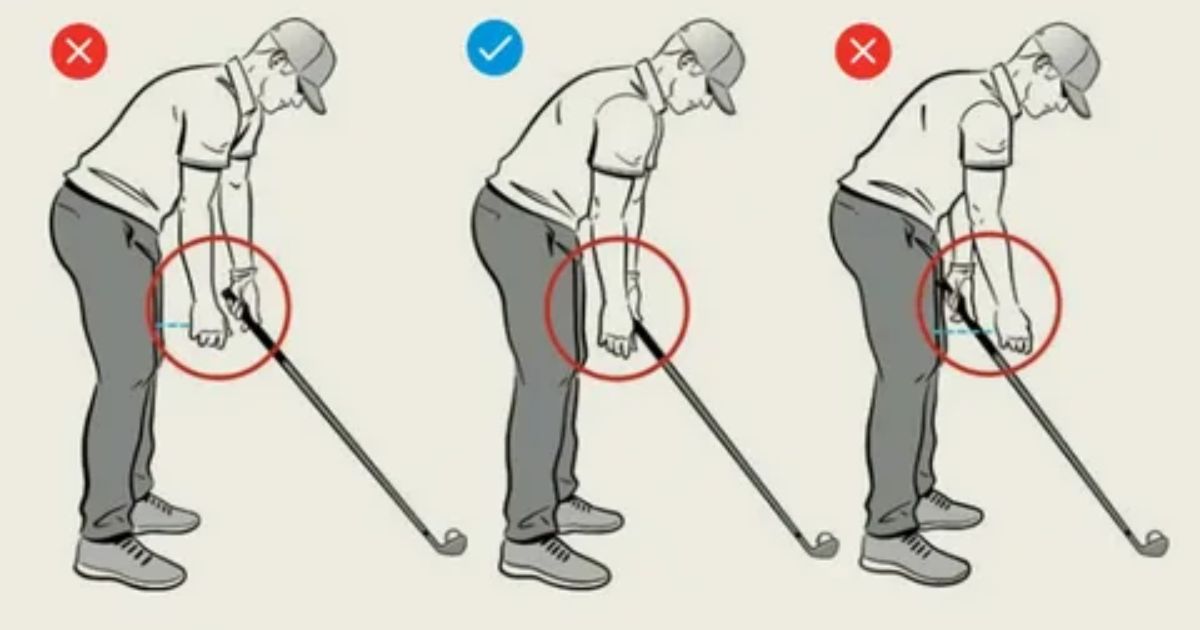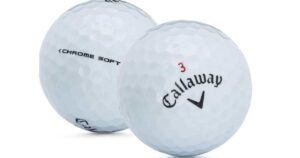Standing at the right distance from the golf ball can influence your swing path, accuracy, and overall performance. Finding the ideal positioning is not a one-size-fits-all solution, as it varies from player to player. Factors like your height, the club you’re using, and your swing style all play a role in determining the right distance.
Do you ever wonder, How Far To Stand Away From a Golf Ball? When it comes to golf, the distance at which you position yourself from the golf ball is crucial for a successful swing. It plays a significant role in achieving the right balance and control during your shot.
Imagine being on the golf course, ready to take your swing. How you position yourself in relation to the golf ball can greatly affect the outcome of your shot. The right placement can help you achieve the perfect balance, power, and precision.
The Importance of Proper Stance
A golfer’s stance is the foundation of their swing, and the correct distance from the ball plays a vital role in this foundation. It affects the golfer’s balance, power, and control. To establish a strong foundation for your golf swing, it is essential to understand the following aspects:
Achieving Balance and Stability
Maintaining balance is crucial in golf. When you stand too close or too far from the ball, it can affect your balance and lead to mishits. Finding the right balance ensures a more consistent and accurate swing.
Generating Power and Speed
The distance from the golf ball, How Far Should I Stand From The Golf Ball?, also influences the power you can generate in your swing. Standing at the optimal distance allows you to transfer maximum energy from your body to the club, resulting in longer and more powerful shots.
Controlling Ball Flight
The correct stance and distance from the ball can help control the direction and trajectory of your shots. This is especially important when you need to shape your shots or avoid hazards on the course.
To achieve all of these objectives, it’s essential to find the optimal distance from the golf ball, which can vary from one golfer to another based on their body type, club selection, and swing style.
Factors Affecting the Ideal Distance
Finding the perfect distance from the golf ball involves a combination of several factors. Each golfer’s unique attributes and preferences contribute to this equation. Let’s explore these factors in detail.
Body Height and Build
Golfers come in various shapes and sizes. Your height, arm length, and body build are key factors that influence your ideal distance from the golf ball. A taller golfer may need to stand farther from the ball to achieve the correct posture, while a shorter golfer may need to stand closer.
Club Selection
Different clubs have different shaft lengths and angles. The choice of club affects your stance, as you’ll need to adjust your posture to accommodate the club’s design. Drivers, for example, require a different setup compared to irons or wedges.
Swing Style
Your natural swing style, whether it’s upright or flat, will impact your distance from the ball. Golfers with a more upright swing tend to stand slightly closer to the ball, while those with a flatter swing may stand a bit farther away.
Comfort and Flexibility
Your comfort and flexibility levels play a significant role in determining your stance. A comfortable and balanced setup allows for a more fluid and controlled swing. Flexibility can influence how far you can comfortably reach the ball.
Shot Shape
The type of shot you intend to play also affects your stance. If you’re looking to shape the ball (e.g., a fade or draw), you may need to adjust your stance accordingly to achieve the desired ball flight.
Practice and Experience
With practice and experience, golfers develop a sense of what works best for them. Over time, you may find that your ideal distance from the golf ball may change as your skills and swing mechanics improve.
Finding Your Ideal Distance
Determining the ideal distance from the golf ball is a highly individualized process. It involves a fair amount of trial and error, as well as a good understanding of your own golf game. Here are some steps to help you find your optimal distance:
Establish a Starting Point
Begin by adopting a neutral stance, with your feet shoulder-width apart. This provides a balanced starting point from which to make adjustments.
Experiment with Adjustments
Gradually make adjustments to your stance based on the factors mentioned earlier. Try different distances and observe the impact on your swing and ball flight.
Seek Professional Guidance
If you’re struggling to find the right distance, consider consulting a golf professional. They can provide expert advice and use technology like launch monitors to analyze your swing and recommend the best setup.
Practice and Feedback
Practice is key to honing your setup. Continuously hit balls at the range with your chosen stance and seek feedback from your shots. Over time, you’ll develop a better understanding of what works for you.
Common Mistakes to Avoid
In the pursuit of finding the correct distance from the golf ball, golfers often make common mistakes that can hinder their performance. Here are some pitfalls to watch out for:
Standing Too Close
Standing too close to the ball can result in a cramped swing and a loss of power. It may also cause you to make contact with the ball on the upswing, leading to top shots.
Standing Too Far
Conversely, standing too far from the ball can cause you to reach for the ball, leading to a loss of balance and control. This can result in slices and hooks.
Inconsistent Stance
Inconsistency in your stance can lead to inconsistency in your shots. It’s crucial to establish a repeatable setup for improved shot consistency.
Neglecting Flexibility
Ignoring the role of flexibility can limit your ability to adjust your stance effectively. Regular flexibility exercises can help you maintain a balanced setup.
The Role of Address Position

The address position in golf refers to the golfer’s stance and posture just before initiating the swing. This position is vital as it sets the stage for the entire swing sequence. Let’s delve into the key components of the address position:
Foot Alignment
Your feet should be parallel to the target line, which is an imaginary line extending from the ball to your target. Proper foot alignment ensures that you’re starting your swing on the right path.
Ball Position
The placement of the ball in your stance varies based on the club you’re using. For shorter clubs like wedges and irons, the ball should be in the center of your stance. For longer clubs like drivers, it should be closer to your lead heel.
Knee Flex
Bend your knees slightly to maintain balance and flexibility. Your knees should be flexed enough to allow you to rotate your hips and shoulders during the swing.
Spine Angle
Maintain a slight forward tilt in your spine. This angle allows you to strike the ball with a descending blow, which is essential for iron shots.
Grip
Your grip on the club should be secure but not overly tight. A neutral grip helps you control the clubface throughout the swing.
Eye Focus
Keep your eyes on the ball throughout the swing. This focus helps with ball contact and shot accuracy. A well-executed address position can significantly aid in finding the correct distance from the golf ball. It ensures that you’re starting from a balanced and controlled setup.
Practical Tips for Improving Your Stance
To enhance your stance and find the ideal distance from the golf ball, consider the following practical tips:
Use Alignment Aids
Alignment aids, such as alignment sticks and training aids, can help you visualize and establish the proper foot alignment and ball position.
Film Your Swing
Recording your swing on video can provide valuable insights into your stance and setup. You can review your footage to identify areas for improvement.
Consult with a Professional
“A golf instructor or club fitter can offer personalized guidance based on your unique characteristics and swing style, including ‘How Far To Stand Away From the Golf Ball?‘ They can recommend specific adjustments to optimize your stance.”
Develop a Pre-shot Routine
Creating a consistent pre-shot routine can help you establish the correct address position and distance from the ball before every swing.
Stay Relaxed
Tension in your body can negatively impact your stance. Focus on staying relaxed, especially in your grip and upper body, for a smoother and more controlled swing.
Table: Common Ball Positions for Different Clubs
| Club Type | Ball Position |
| Driver | Near the lead heel |
| Fairway Woods | Slightly forward of center |
| Irons | Center of the stance |
| Wedges | Center of the stance |
Conclusion
In the world of golf, the importance of standing at the correct distance from the ball cannot be overstated. Your stance serves as the foundation of your swing, influencing your balance, power, and shot accuracy. While there are general guidelines to follow, finding your ideal distance is a highly personalized journey that involves considering your body type, club selection, and swing style.
It’s a process that requires patience, practice, and the willingness to seek expert guidance. By understanding the factors that influence your stance and addressing common mistakes, you can improve your golf game and enhance your overall performance on the course. Remember, the journey to finding the right distance from the golf ball is as much about self-discovery as it is about mastering the sport.











